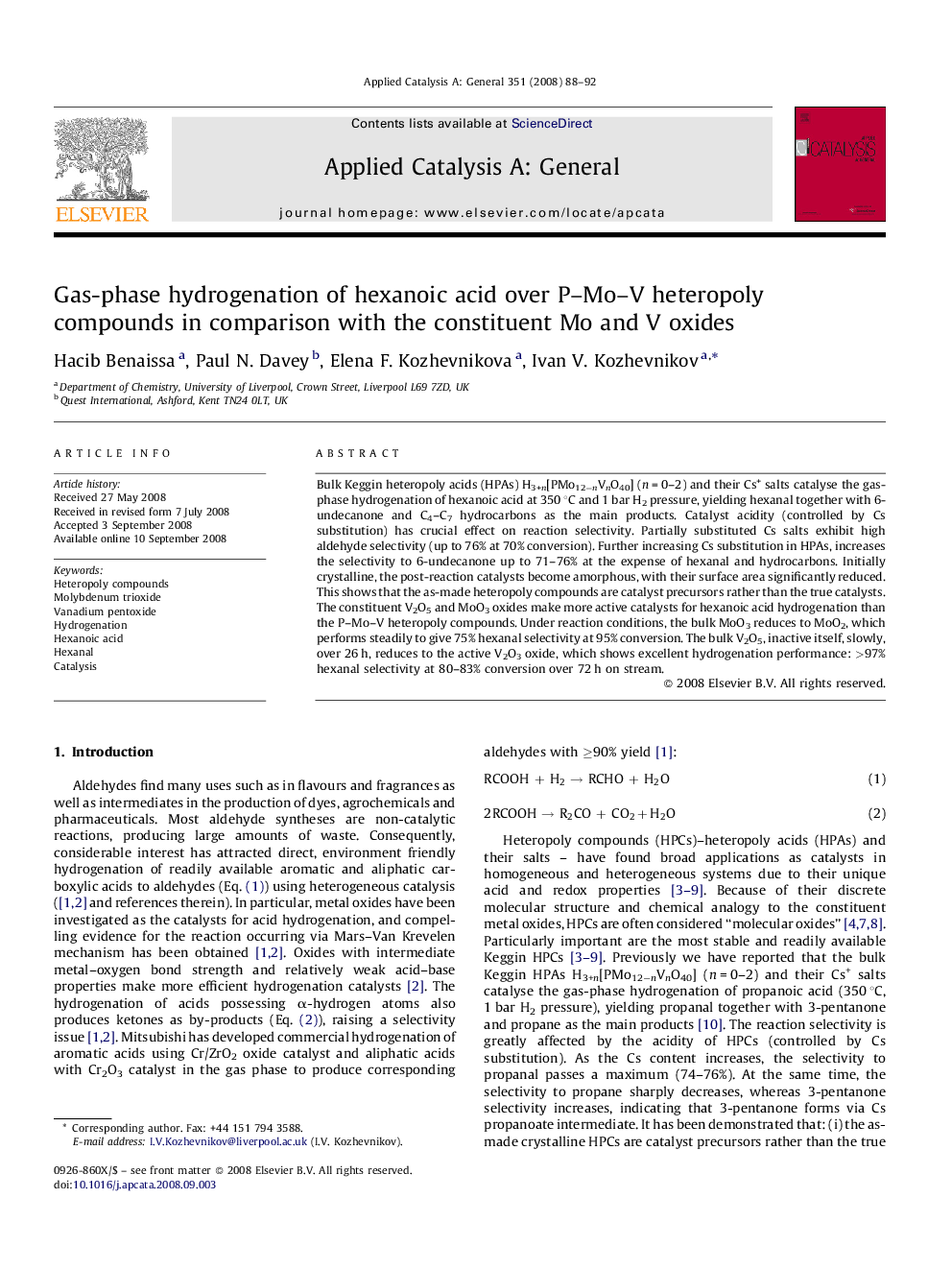| کد مقاله | کد نشریه | سال انتشار | مقاله انگلیسی | نسخه تمام متن |
|---|---|---|---|---|
| 42633 | 45934 | 2008 | 5 صفحه PDF | دانلود رایگان |

Bulk Keggin heteropoly acids (HPAs) H3+n[PMo12−nVnO40] (n = 0–2) and their Cs+ salts catalyse the gas-phase hydrogenation of hexanoic acid at 350 °C and 1 bar H2 pressure, yielding hexanal together with 6-undecanone and C4–C7 hydrocarbons as the main products. Catalyst acidity (controlled by Cs substitution) has crucial effect on reaction selectivity. Partially substituted Cs salts exhibit high aldehyde selectivity (up to 76% at 70% conversion). Further increasing Cs substitution in HPAs, increases the selectivity to 6-undecanone up to 71–76% at the expense of hexanal and hydrocarbons. Initially crystalline, the post-reaction catalysts become amorphous, with their surface area significantly reduced. This shows that the as-made heteropoly compounds are catalyst precursors rather than the true catalysts. The constituent V2O5 and MoO3 oxides make more active catalysts for hexanoic acid hydrogenation than the P–Mo–V heteropoly compounds. Under reaction conditions, the bulk MoO3 reduces to MoO2, which performs steadily to give 75% hexanal selectivity at 95% conversion. The bulk V2O5, inactive itself, slowly, over 26 h, reduces to the active V2O3 oxide, which shows excellent hydrogenation performance: >97% hexanal selectivity at 80–83% conversion over 72 h on stream.
P–Mo–V heteropoly compounds (HPCs) catalyse gas-phase hydrogenation of hexanoic acid, yielding hexanal together with 6-undecanone and hydrocarbons. Catalyst acidity (controlled by Cs substitution) has crucial effect on reaction selectivity. The HPCs are catalyst precursors rather than the true catalysts in this reaction. The constituents MoO3 and V2O5 oxides make more active catalysts than the HPCs, providing respectively 75% and 97% hexanal selectivity at 95% and 83% conversion. Figure optionsDownload as PowerPoint slide
Journal: Applied Catalysis A: General - Volume 351, Issue 1, 15 December 2008, Pages 88–92